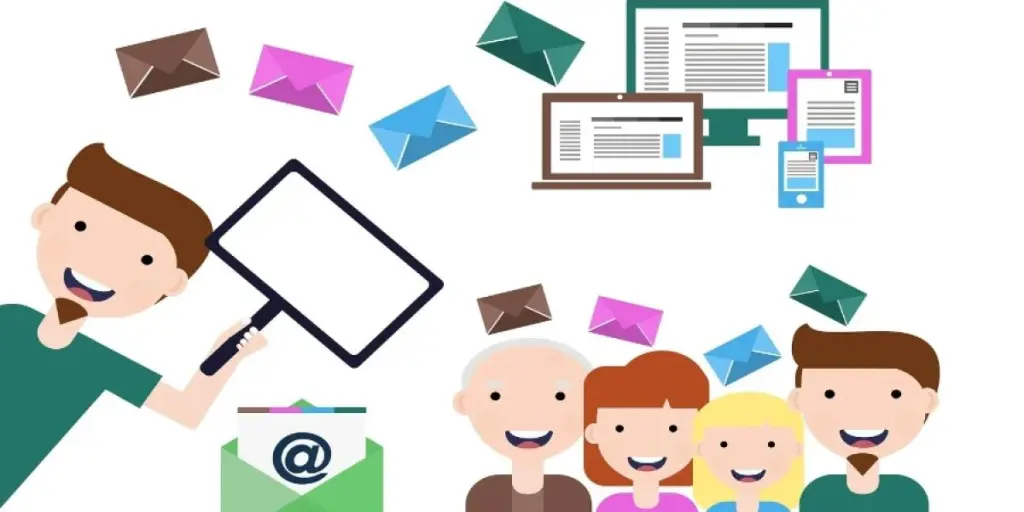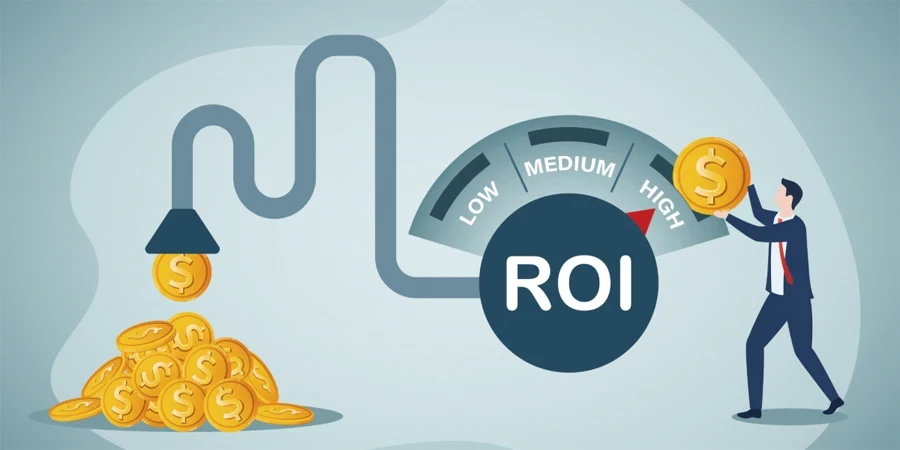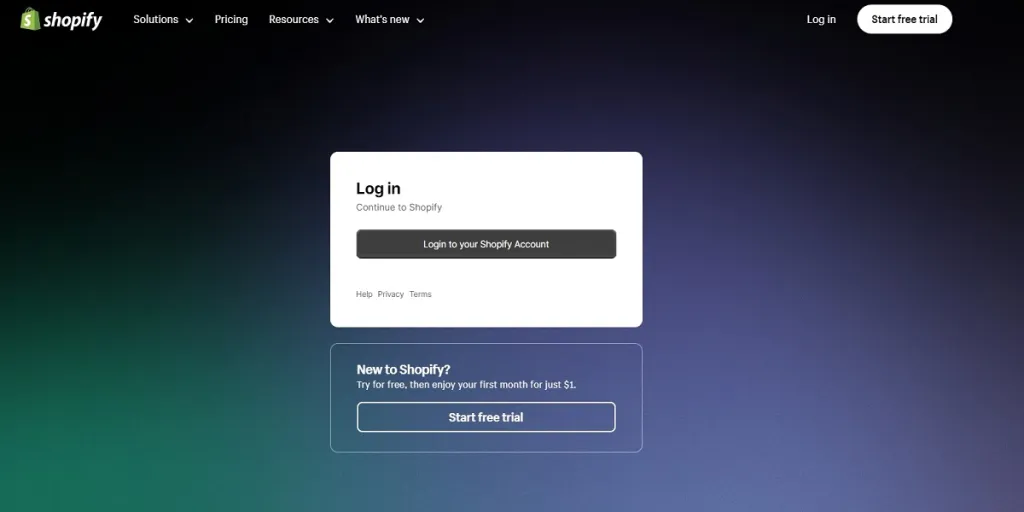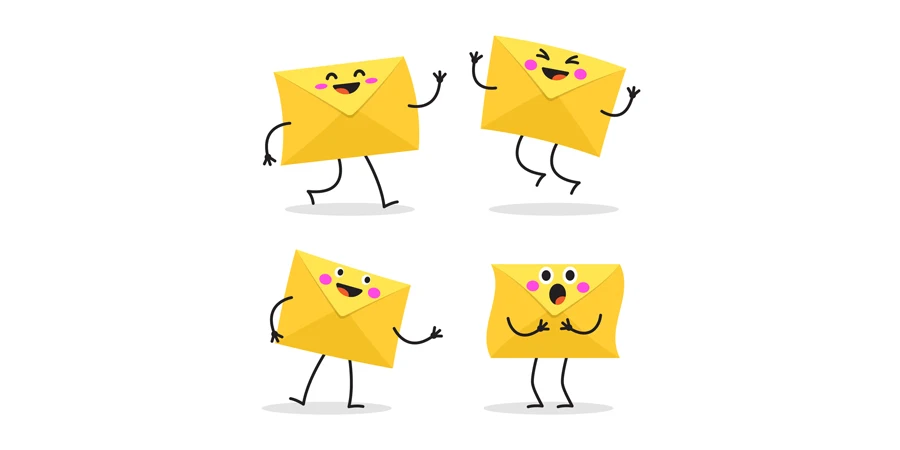If you wonder what the one thing all successful businesses have in common is, it’s a well-thought-out competitive advantage. Successful businesses have put time, money, and effort into crafting their own answer to the famous question: Why would people buy from you and not from your competitor?
If you want to craft your own answer to this question as well, you’re in the right place. Read on for insights into the value of knowing your competitive advantage, and discover how to define your competitive advantage in four simple steps.
Table of Contents
What you should know about competitive advantages
Why you should not rely on pricing as a competitive advantage
The 2 types of competitive advantages you can create
Determine your competitive advantage in 4 simple steps
The bottom line
What you should know about competitive advantages
Almost any product you sell is also sold by someone else. If you sell glasses, there are other businesses that sell glasses as well. Their glasses might be different, but at the end of the day, it’s the same solution to the same problem.
Even if you’re one of the lucky and rare e-commerce businesses that happen to sell a one-of-a-kind product no one else sells, you’re likely not solving a problem that no one else solves in another way.
If you are the only business selling glasses, you still have to compete with businesses selling lenses. In other words, your product can’t be the only solution to a problem that many people suffer from. And this is why you need to have competitive advantages, regardless of your industry and the product you sell.
The title of this guide says ‘finding’ your competitive advantage, but here’s the truth: a competitive advantage is not something you find. It’s something you create.
It’s a process that starts while you’re studying the market, doing your competitive analysis, and developing your value proposition.
A competitive advantage is only powerful if:
- It fills a gap in the market
- It is hard to copy or replicate
- It is the foundation of your marketing message
Why you should not rely on pricing as a competitive advantage
At the beginning, many e-commerce business owners think of the price as the only thing they can stand out with.
And it’s normal to think this way. When you’re starting, you can’t compete on social proof yet, and you can’t compete on experience or years of business. The first thing that comes to your mind is to compete on prices, at least as a short-term strategy, until you gain a customer base.
It’s not wrong to sell your products at a lower price. You can do that as long as you have profitable margins that you’re satisfied with. But, you should not market that as your competitive advantage or lower your price just to have a competitive advantage.
Being cheap should not be a competitive advantage, and there are four reasons for that:
1. When you compete on price, you mainly attract highly price-sensitive customers.
You will attract people who make their purchasing decisions solely based on the price. Therefore, if you want to increase the prices later, the customer base you gained—thanks to the low prices—will no longer be interested in your products.
They only bought from you because of the low price in the first place. It’s better to have a base of high-end customers who will be loyal to your business for reasons other than low prices.
2. Competing on price can negatively impact your brand image.
Your products will be perceived as low-quality if their prices are too low, especially by customers who mostly care about the quality, the features, and the benefits.
Customers with high purchasing power will not be interested in a product for which the only advantage is being cheap. So, don’t market your products as “the cheapest” in the market, as it will hurt your brand image and perception.
3. Lowering prices can prevent you from having other competitive advantages in the future.
Low prices mean low margins, and in the long run, you may not have the budget to improve your product and boost your brand with other competitive advantages. Your business growth will be limited if the margins you generate are just enough to keep your business alive.
4. Lowering prices can also hurt the whole industry you’re in.
This is especially true if your product is great and you still choose to compete on price.
It can make your competitors lower the price even more because it’s the only way they can compete with you. This can turn the whole industry into a race to the bottom.
Remember: competitive advantage is about having a unique offer, not a cheap offer. A lower price can be part of your overall offer, but it should not be your offer’s main advantage.

The 2 types of competitive advantages you can create
In general, we can categorize competitive advantages based on the party that perceives the advantage. In other words, you can have two types of competitive advantages:
1. Client-based competitive advantages:
These advantages must be relevant to your target audience and perceived as “competitive” by them.
You might think if your product doesn’t have special features no one else has, then you can’t compete on any client-based advantages. But, that’s not true.
Product advantages are only one part of client-based advantages. There are many things your customers can perceive as “advantages” and have nothing to do with the product itself.
Anything your target audience will benefit from by exclusively buying from you is a competitive advantage.
Here are some examples of the client-based competitive advantage:
- Ingredients & materials:
Your product is made with unique elements (high-quality materials, an ingredient that is proven scientifically to be beneficial in solving the customer’s problem, etc.), or does not contain the harmful ingredient used in your industry.
- Results & transformation:
Your product leads to concrete results and transformation that people will get and notice when they use it.
- Method & process:
Your product is manufactured using a special and efficient process that has been proven to lead to higher quality compared to other processes.
- Technology:
Your product contains or is made using an innovative technology that makes the product more effective.
- Third-party testing & social proof:
Your product was tested by an independent company, was clinically tested, or at least tested by a sample of people who shared their feedback or documented their before/after state.
- Time & simplicity:
Your product saves time because it’s easier to use (has a less complicated process of use), takes less time to function, or shows quicker results.
- Expertise:
Your product was manufactured or designed under the supervision of experts (or is endorsed by experts).
- Customer service:
Your customer service is impeccable. Your team is efficient, empathetic, responds quickly, offers personalized and dedicated help, and treats clients with respect.
- Delivery:
Your delivery service is fast regardless of any conditions, is professional, and handles products correctly. It can also be free, but the point is offering a great delivery experience that your competitors don’t.
- Packaging:
Your packaging is unique, easy to handle, protects the product, and grants a memorable unboxing experience.
- Design:
Your product looks unique and aesthetically pleasing to look at, put in plain sight, and share on social media.
- Causes:
Your business supports a good cause, or it’s environmentally friendly. This is important for many people who want to support the cause they believe in.
- Data protection & privacy:
Your business has an ethical data policy. It’s transparent about data collection and use, respects customers’ privacy, and doesn’t share their data with a third party without their consent.
Of course, there are other client-based advantages, depending on your industry. You might have other advantages that only apply to your industry, but the key is having unique and beneficial perks that are relevant to your target audience.
The example of supporting a cause is something you need to make sure your target audience resonates with. The same goes for other advantages.
For example, if your target audience is not aesthetically driven, packaging and design will be irrelevant as advantages. If your target segment consists of more practical people, time and simplicity serve as significant competitive advantages.
Everything starts with knowing your target audience and what your customers need, that’s why they’re called client-based advantages. They should not be seen as advantages in general. They should be seen as advantages specifically by your target customers.

2. Brand-based competitive advantage:
These are perceived as “advantages” by competitors and not by customers. You can be the best e-commerce brand in your niche at outbound marketing, but your customers don’t care about that as it will not benefit them. Only your competitors care.
A brand-based competitive advantage is anything that worries your competitors and makes your business better equipped to increase its market share.
It has more to do with how your business operates, and in general, it gives you a huge “advantage” over your competitors in terms of branding, management, and conversion.
Here are some examples of brand-based competitive advantage:
- Target market:
You choose to niche down and select a narrow segment of your target audience to direct your marketing efforts and get better results than your competitors.
- Purpose & vision:
Your brand has an inspiring purpose and vision that your target audience connects with.
- Story:
Your brand story is unique, inspiring, and insightful. It speaks to your target audience, and they can relate to it.
- Network & access:
You have special access to suppliers, service providers, or potential leads your competitors don’t have.
- Process:
You manage your e-commerce business with efficient and innovative processes and tools that streamline all the activities and increase your team’s productivity.
- Marketing & content:
Your marketing strategy is accurate and effective. The way you generate, nurture, and convert leads is successful and fruitful.
Learn more about branding by reading this article: Elevating Your Online Store: 5 Steps to Effective E-commerce Branding.
Determine your competitive advantage in 4 simple steps
As I said earlier, the process actually starts in the early stages of building your e-commerce business. It starts with choosing which product to sell, defining your value proposition, performing competitive analysis, etc.
But, you can follow these steps to determine your competitive advantage at any stage of your business. Of course, this should be preceded by a deep understanding of your product, value proposition, and target audience.
And remember, you need both types of competitive advantages (but it doesn’t have to be complicated). You need to offer something special to your customers, and you need to outperform your competitors in something.
And this is how you do it:
1. Make a list of all the elements that differentiate your e-commerce business
Write down everything that differentiates your business—literally everything. Whether it’s a client-based or brand-based advantage, put it on paper even if it seems like a small detail to you (colors, process, design, flavors, delivery, network, PR strategy, values, etc.).
If you’re still in the first stages of your e-commerce business, write down the advantages you want your product and brand to have. This should not be based on your taste or preferences, but on what the market needs (for client-based advantage) and what your competitors are doing wrong, not doing well enough, or not doing at all (for brand-based advantage).
You can do the second exercise even if you already started your e-commerce a while ago. Some competitive advantages can only be implemented in the manufacturing and building phase, but others can be added later to a product or brand.
2. Evaluate each differentiator
You need to evaluate each “differentiator” in your list based on some criteria.
For client-based advantages, evaluate them based on:
- Importance to your target audience and segment.
- Competitiveness in the market (for example, if you offer free delivery and one of your competitors offers a free delivery starting from USD 15, it’s not a huge difference, and doesn’t serve as a strong competitive advantage).
For brand-based advantages, evaluate them based on:
- Effectiveness in your niche (for example, you have a marketing team that is expert at TikTok marketing and can outperform all of your competitors, but your target audience isn’t on TikTok. In this case, that advantage is irrelevant).
- Relevance to your brand essence and personality (your business should not operate in a way that contradicts your brand values and personality).
Another thing to evaluate for both types of advantages is the possibility and ease of implementation. You can attribute a score or a percentage to each advantage using the matrix below:

3. Choose 3-5 key differentiators and condense everything into a sales pitch
From your matrix, choose the most important, relevant, practical, and implementable competitive advantages. These are the building blocks of your unique offer (and the arguments you will use and communicate to convert your leads).
You need to focus on those three to five advantages in your marketing message and sales process. I recommend writing a short pitch that explains your value proposition and presents your competitive advantages in a clear, concise, and effective way.
This is an example of such a sales pitch that I found online. It’s not about a physical product, but it gives you an idea of how to write a short paragraph that sells your product to your target audience and highlights your value proposition and competitive advantages:
Video testimonials can increase the conversion rate by 32%, but video production takes a lot of time, energy, and money. With “Name of the software”, recording video testimonials becomes easy and quick. Simply share a link and collect video responses from your customers with our crafted template. “Name of software” automatically generates a video with your brand’s logo and colors, and you can easily embed and share it.
4. Do A/B tests to see which competitive advantage is the most effective
It’s important to test which competitive advantage sells better and matters more to your customers. You can do that with A/B testing, which is creating two versions of a web page, testing the response of your customers, and comparing to figure out which one performs better. And there are many tools to help you with that.
You can create two or more landing pages and make each one focused on a different competitive advantage. Then, perform your A/B tests and analysis, and privilege the competitive differentiators your customers love.
The bottom line
It’s wrong to think that competitive advantages are fixed and should always stay the same. Your brand evolves, the market changes, and trends come and go. Your business should remain flexible and ready to change or upgrade its competitive advantage over time.
But remember, you now have the process to make your brand stand out from its competitors, and it’s easy to achieve that when you know your industry and audience well. The more you get to know them and know what your market lacks, the more powerful and hard-to-copy your competitive advantage will be.








